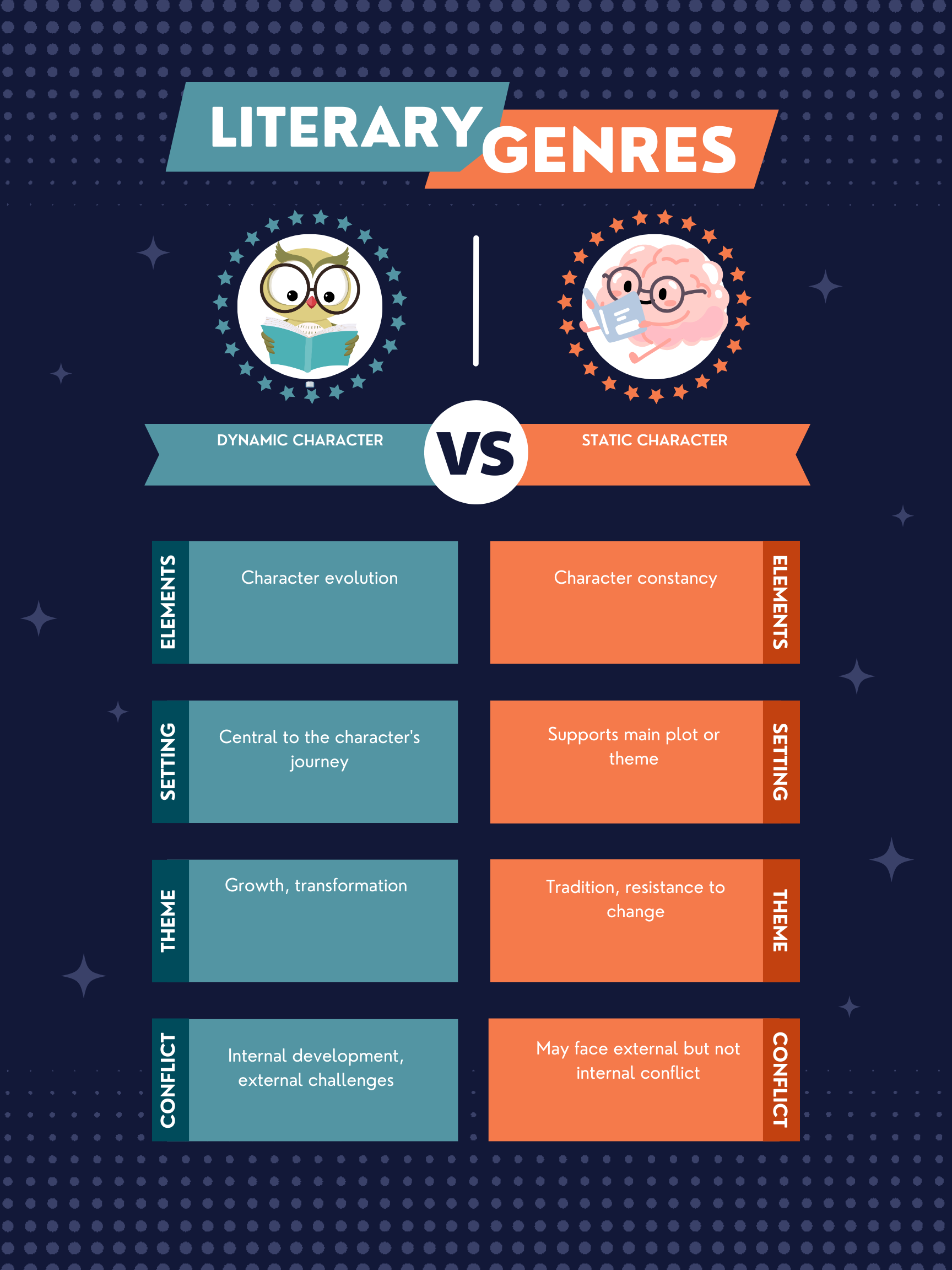A dynamic character undergoes significant internal change; A static character remains the same throughout the story.
Dynamic Character
A dynamic character is like a caterpillar that transforms into a butterfly 🦋. They start the story one way and, through trials, triumphs, and personal discoveries, evolve significantly. This transformation can be in their beliefs, personality, or understanding of the world.
Example: Ebenezer Scrooge from A Christmas Carol by Charles Dickens. Scrooge starts as a miserly old man, but through ghostly interventions, he becomes generous and kind-hearted.
Static Character
In contrast, a static character is like a sturdy oak tree 🌳, steadfast and unchanging despite the storms it faces. They remain constant throughout the story, often serving as a benchmark to highlight the dynamic characters’ transformations.
Example: Sherlock Holmes in most of Arthur Conan Doyle’s stories. Holmes is consistently brilliant, observant, and detached, regardless of the mysteries he solves.
Summary
| Feature | Dynamic Character | Static Character |
|---|---|---|
| Definition | Undergoes significant internal changes | Remains the same throughout the story |
| Purpose | To show growth and transformation, making the story engaging | To provide consistency and contrast to the changing elements |
| Usage | Main characters, to drive the story forward | Supporting characters, to highlight changes in dynamic characters |
| Relevant Examples | Ebenezer Scrooge, Elizabeth Bennet (Pride and Prejudice) | Sherlock Holmes, Draco Malfoy (Harry Potter series) |
Writing Tips
When writing a dynamic character, think about the journey. Start with a clear flaw or belief that will be challenged. Map out key events that test and ultimately change the character. For inspiration, consider Elizabeth Bennet’s evolving understanding and overcoming of her prejudices in Pride and Prejudice.
For static characters, focus on their role in the story. They can be a source of reliability or a foil to the protagonist. Ensure they have depth and interest, even if they don’t change. Think of Dr. Watson in Sherlock Holmes stories, who provides a steady contrast to Holmes’ brilliance.
FAQs
How do dynamic and static characters affect the plot?
Dynamic characters drive the plot through their personal growth and changes, while static characters often support the plot by providing stability or highlighting the changes in others.
Can a story have more than one dynamic character?
Yes, multiple characters can undergo significant transformations, adding complexity and depth to the narrative.
Are static characters always less interesting than dynamic ones?
Not necessarily. Static characters can be deeply complex and pivotal to the story’s success, depending on their portrayal and relevance to the plot.
Exercise
Read the following paragraph and identify whether the character described is dynamic or static. Provide your reasoning.
“Jonathan started the summer convinced that his small town was the dullest place on earth. However, after a series of adventures with a mysterious new friend, he discovered the magic hidden in plain sight. His newfound appreciation transformed his attitude toward his hometown and life in general.”
Answer: Dynamic character. Jonathan undergoes significant internal change, shifting from a negative to a positive perspective on his town and life.
Other Interesting Device Comparisons
- Protagonist vs. Antagonist: Explore the central figures of conflict in storytelling.
- Foreshadowing vs. Flashback: Understand how authors use time to enhance narrative suspense or depth.
- First-Person vs. Third-Person Narration: Dive into the impact of narrative perspective on storytelling.
- Symbolism vs. Motif: Discover the subtle ways themes and ideas are reinforced in literature.
These comparisons can offer fresh insights into the art of storytelling and enrich your understanding of literary techniques.

